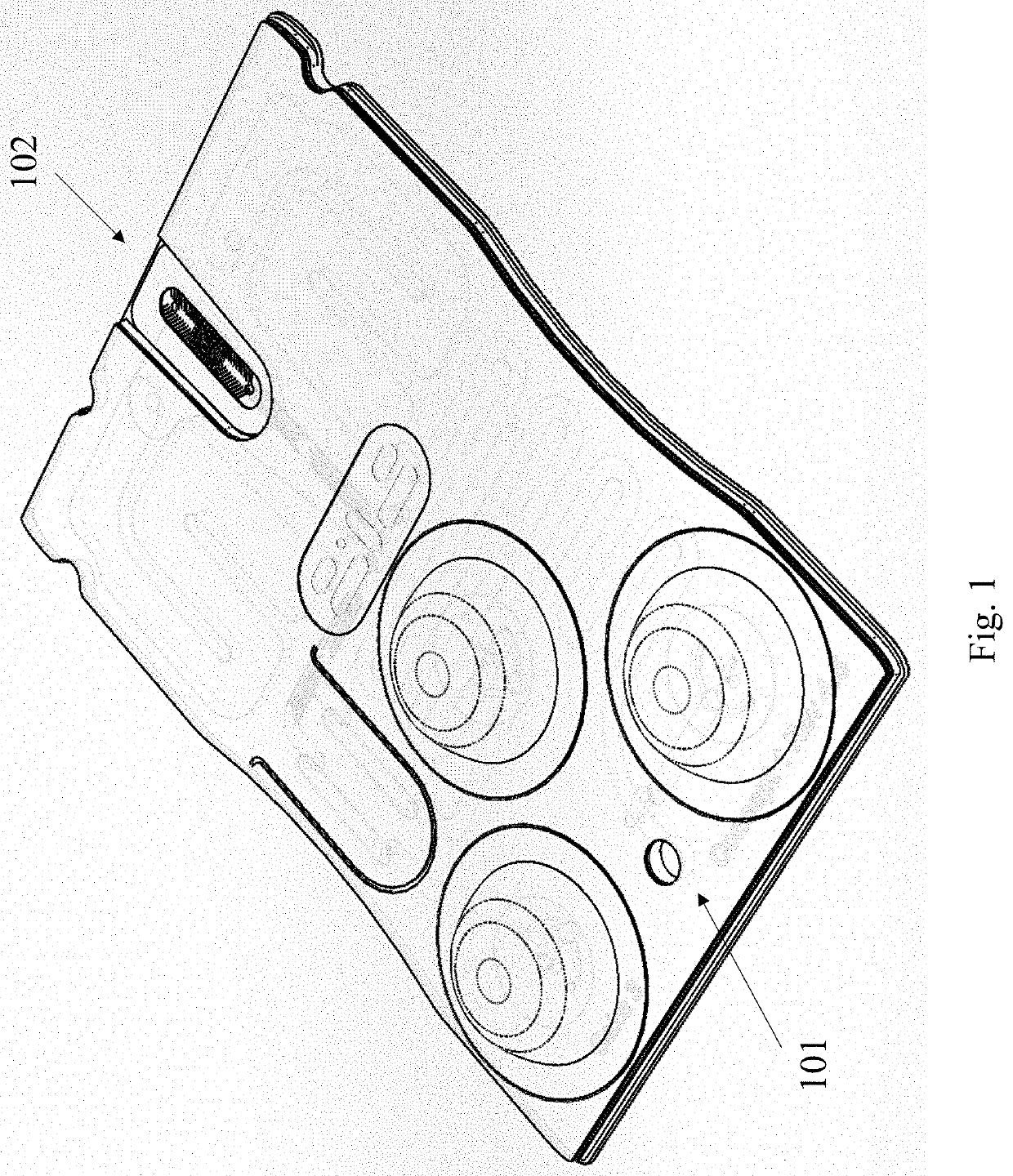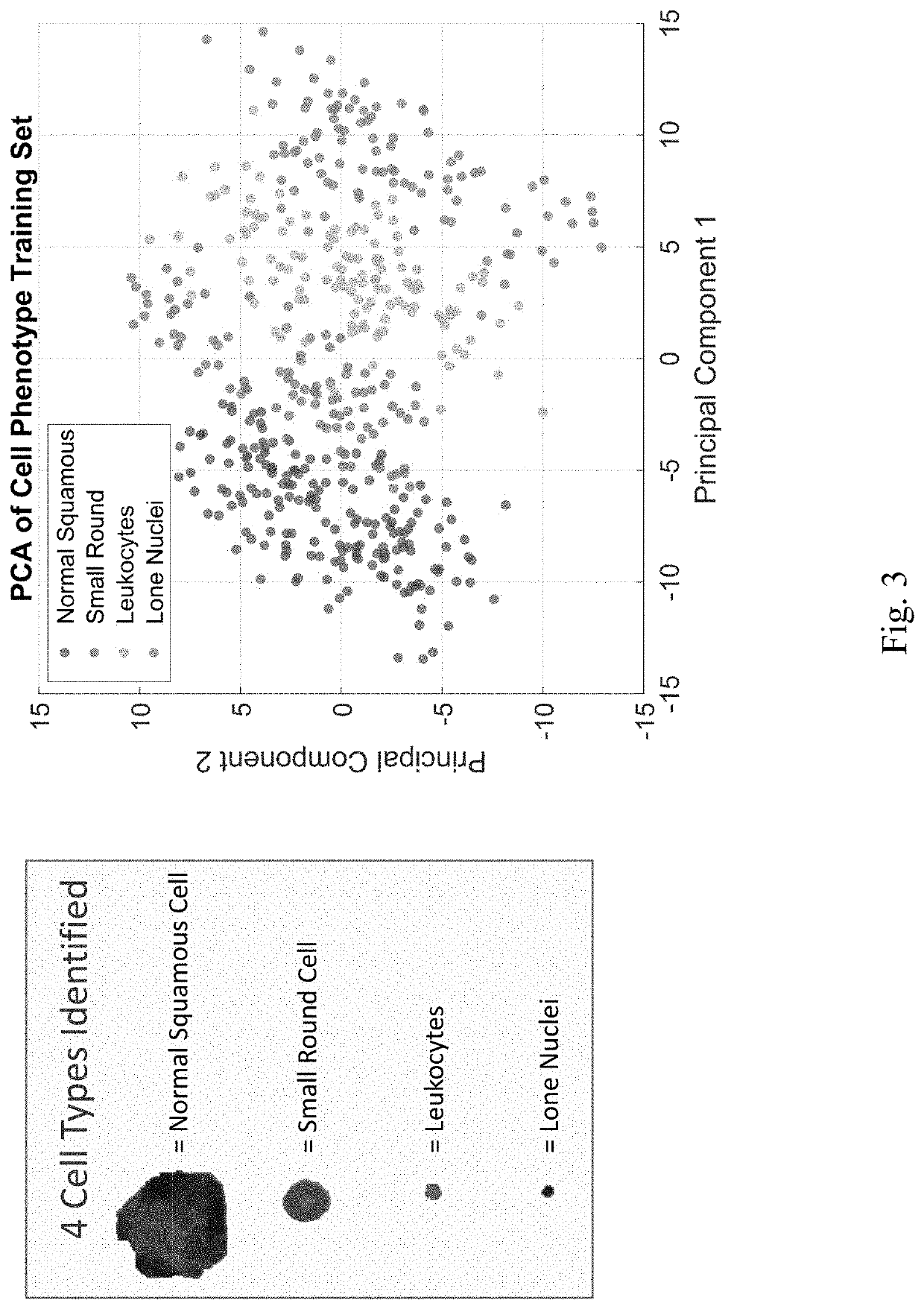Systems and Methods of Oral Cancer Assessment Using Cellular Phenotype Data
a technology of oral cancer and phenotype, applied in the field of oral cancer assessment using cellular phenotype data, can solve the problems of poor long-term prognosis of patients with oscc, low survival rate for all major cancers, and 29% of opc cases
- Summary
- Abstract
- Description
- Claims
- Application Information
AI Technical Summary
Benefits of technology
Problems solved by technology
Method used
Image
Examples
experimental examples
[0110]The invention is further described in detail by reference to the following experimental examples. These examples are provided for purposes of illustration only, and are not intended to be limiting unless otherwise specified. Thus, the invention should in no way be construed as being limited to the following examples, but rather, should be construed to encompass any and all variations which become evident as a result of the teaching provided herein.
[0111]Without further description, it is believed that one of ordinary skill in the art can, using the preceding description and the following illustrative examples, make and utilize the present invention and practice the claimed methods. The following working examples therefore are not to be construed as limiting in any way the remainder of the disclosure.
example 1
[0112]Experiments were conducted to identify cellular phenotypes within a cytological sample of oral cells obtained using a rotating brush (i.e. a brush biopsy) on oral tissue. The samples were processed, where cells were collected on a membrane within a self-contained disposable cartridge and stained using various dyes or antibodies (e.g., DAPI (nuclear stain), phalloidin (cytoplasmic stain), and anti-Ki67 (biomarker)).
[0113]As demonstrated in FIG. 3, principle component analysis (PCA) is used to discriminate between four different cellular phenotypes in the analyzed samples: normal squamous cells, small round cells, leukocytes, and lone nuclei. FIG. 4 depicts images comparing the phenotypes within a benign lesion (left) and an oral squamous cell carcinoma (OSCC) lesion (right). Software depicting the outlining of stained cells is shown in FIG. 7. Normal squamous cells in a benign lesion sample are shown in FIG. 8 and small round cells in an OSCC lesion sample are shown in FIG. 9.
[...
PUM
| Property | Measurement | Unit |
|---|---|---|
| aspect ratio | aaaaa | aaaaa |
| morphological characteristics | aaaaa | aaaaa |
| anatomic structure | aaaaa | aaaaa |
Abstract
Description
Claims
Application Information
 Login to View More
Login to View More - R&D
- Intellectual Property
- Life Sciences
- Materials
- Tech Scout
- Unparalleled Data Quality
- Higher Quality Content
- 60% Fewer Hallucinations
Browse by: Latest US Patents, China's latest patents, Technical Efficacy Thesaurus, Application Domain, Technology Topic, Popular Technical Reports.
© 2025 PatSnap. All rights reserved.Legal|Privacy policy|Modern Slavery Act Transparency Statement|Sitemap|About US| Contact US: help@patsnap.com



